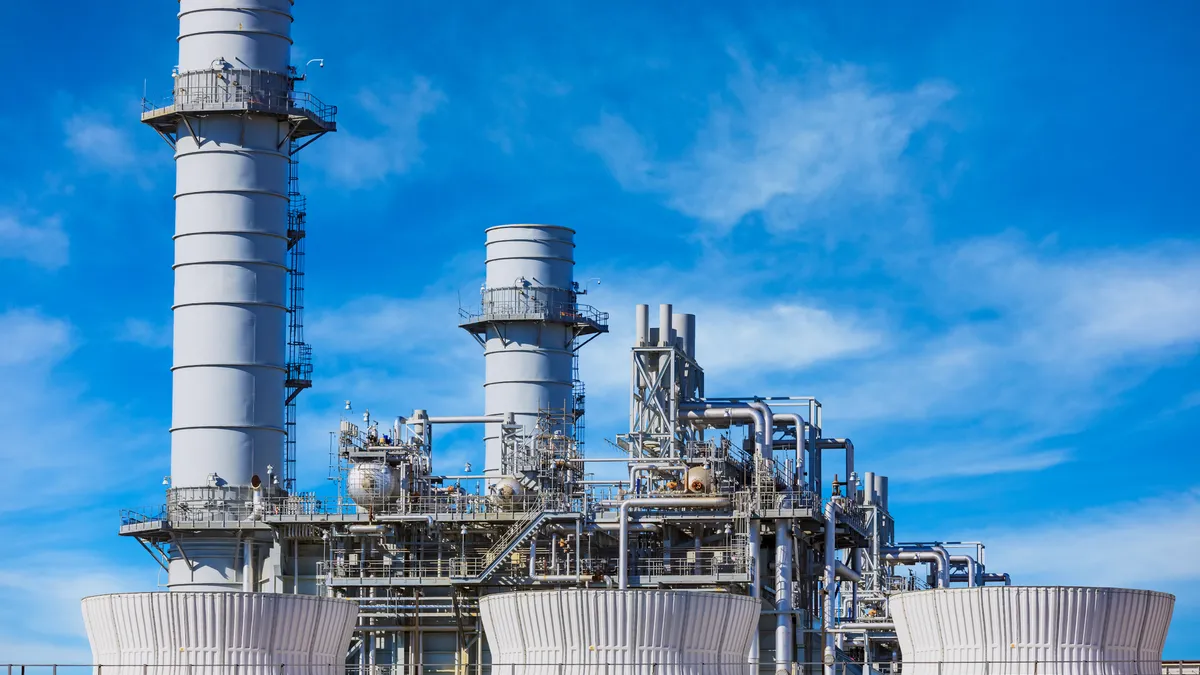Gas-fired generation will likely be needed to maintain grid reliability for years to come, according to Southwest Power Pool and Black Hills Energy executives.
“Hopefully there's a replacement technology other than gas that can provide that reliability, but today, gas is the reliability [option] of choice, and will be for at least a decade,” Mark Lux, BHE vice president for power delivery, said Tuesday during a panel discussion at the National Association of Regulatory Utility Commissioners’ annual meeting in Anaheim, California.
BHE’s Colorado utility is adding solar, wind and batteries to comply with the state's requirement to cut carbon emissions from the power sector80% by 2030, according to Lux. However, wind turbines trip offline when temperatures exceed 104 degrees or fall under 20 degrees below zero, leading to periods when gas-fired generation serves all of the utility’s load, Lux said.
BHE is seeing major load growth in some areas, driven by population shifts, industrial development and data centers, according to Lux.
SPP expects its load will grow 30% by 2030, according to Bruce Rew, the grid operator’s senior vice president of operations. The grid operator has about 34 GW of wind on its system, which has a peak load of about 56 GW, Rew said during the panel on controlling gas risk in an era of surging load growth.
SPP’s forecast for the next seven days is for about 30 GW of wind generation but it could fall to 5,000 MW in that period, according to Rew. “How do we manage that?” Rew asked. “We've got to have a diverse portfolio … We've got to have something else to keep the lights on. It ideally would be as economic and clean as possible, and right now, the best option that we have for generation over the next several years looks like it's natural gas.”
SPP’s interconnection queue totals about 90 GW, with solar making up about 35% of the queue’s capacity, followed by storage, wind and natural gas, which accounts for about 10% of the queue, according to Rew.
Can PJM market spur generation?
In response to a question about whether competitive markets can support infrequently used gas-fired combustion turbines, Chris Moser, executive vice president, head of competitive markets and policy for NRG Energy, said “the belief in PJM’s markets is not at a high point.”
Until the last capacity auction, capacity prices over the previous five years had been relatively low, PJM moved to change its market rules in the middle of an auction process in late 2022 and now the grid operator plans to make additional rule changes, according to Moser.
“This is not confidence inspiring from the investment community,” Moser said.
Further, Moser said PJM’s typical three-year forward capacity market, which has been compressed into shorter time periods, is currently inadequate for bringing on new power supplies in that timeframe.
It takes about 18 months to build a combustion turbine unit and about two years to build a combined cycle plant, according to Moser. However, there is a two to three year wait list to acquire a turbine as well as a lengthy interconnection queue in PJM, he said.
“Three years out isn't enough time to say, ‘Oh, there's a big price signal out there, and I need to go capture that by building a unit in three years,’” Moser said. “That is right now … a physical impossibility.”
Even so, higher capacity prices will likely spark additional power supplies, according to Moser. “If prices are high, price will solve price,” he said. Further, despite uncertainty in PJM, some companies will likely build generation, Moser said.














